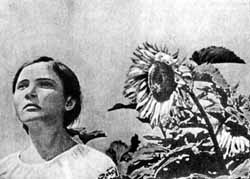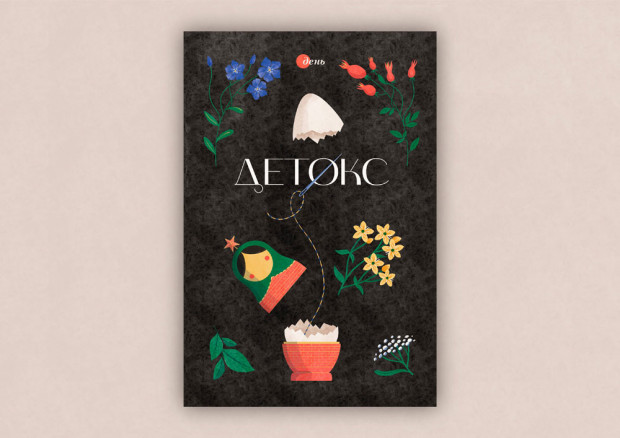Silver Screen at Dawn

A mini-festival of early European films recently held in Kyiv was important not only as a cultural event of the kind (Kyiv audiences have seen German retrospectives, mostly representing silent movies), but also as according to its scope. For the first time people could see productions belonging to different national cinema schools, directors with different temperaments. It was a rare opportunity to take a closer look at the roots of the young art of moving pictures. Something was created between the brothers Lumiere’s first public show and 1929 with the first soundtrack which is currently referred to as classical cinematography, films that are handbooks for all directors and critics.
Early movies certainly have one advantage: unable to enrich scenes with sounds, the filmmakers focused on purely visual aspects. Gestures, facial expressions, refined stage props and wardrobe were the principal means of reaching the audience. This was quite enough to create powerful true-to-life works and the best graphic evidence was the mini-festival lasting five nights at the Children’s Music Theater. The program consisted of different productions: straightforward social realism, including proletarian daily routine in Borinage (Belgium, 1930) and the antiracist protest of City Without Jews (Austria, 1924); precursors of thrillers like Satanic Rhapsody (Italy, 1917), a modernistic, at times naive yet profoundly poetic interpretation of the legend about Dr. Faust and Mephistopheles; an experimental trend (experimental does not sound right, for every film was an experiment at the time) represented the Belgian surrealist Henri Storck’s montage films On the Camera’s Edges (1928-33) and Pleasure Trains (1930). Bold handling of material, unusual angles, ultramodern rhythm combined to make any sound effects utterly superfluous.
There were interesting screen versions of classic works like Carmen (1918) by the German classic Ernst Lubitsch, starring the inimitable Pola Negri, which is still a model interpretation of the legendary story; French Figaro (1928) with a good cast, wardrobe, and camerawork, although its director Gaston Ravel (no relation to the composer Maurice Ravel) blundered trying to squeeze all three Beaumarchais plays (including the drama Maleficent Mother) into an hour and a half film, so all scenes following Figaro’s happy marriage look a dull and unnecessary supplement to the sparkling plot.
Needless to say, Oleksandr Dovzhenko’s Earth and the Swedish actor and film director Victor Sjostrom’s Phantom Chariot (1920) marked the festival’s peak. Actually, such productions are the foundations of cinematography. Dovzhenko’s film has that quality found in brilliant works of art which makes it look totally different now than 10 or 70 years ago. Class realities or the tragedy of a collectivization- devastated village are not the only essence of his message. It is also Ukraine torn by a fratricidal war and, at a broader angle, man and his place on earth between life, love, and death. And this far from exhausts the implications secreted in Dovzhenko’s masterpiece.
The Phantom Chariot, for its part, is innately classic Swedish production. Ingmar Bergman referred to Sjostrom’s film as one of the constant sources of his inspiration. Purely technical breathtaking innovations, sharply outlined ethical problems, a deep insight into the leading characters (which is primarily true of the main hero played by Sjostrom, one of the greatest movie actors of all time) lead this production over and above our epoch.
Naturally, silent films of this caliber required special skill from the accompanying musicians. Not always the case, regrettably. Thus, Henri Storck’s films were badly damaged by the pianist’s loud and lamentable performance (he had apparently practiced his skill at a basement diner). There were moments when one felt like shoving him from the instrument and out of the audience. The Lysenko school orchestra worked hard and well (incidentally, the students with their parents formed the largest and most responsive part of the audience). Most of the accompaniment was provided by the Musicians of Europe, an amateur orchestra founded in 1995 on Belgian diplomat Pierre Dubuisson’s initiative (known for his devotion to music and cinema). The most interesting accompaniment was accorded Earth and Phantom Chariot. Dovzhenko’s film was accompanied by a group of musicians of the National Symphony Orchestra with its director Volodymyr Sirenko. Sjostrom’s production had its own melodious and at time very emotional score written by Matti Bu, a young Swedish composer who performed it at the festival with the Musicians of Europe.
No one knows whether this festival will become a regular event. I hope it will, because silent movies are in a way like Atlantis, a whole continent of half-forgotten yet bewitching images. Exploring it takes much time but is extremely rewarding, giving one the inimitable awareness of oneself as a pioneer. Here the silver screen lights up like the rising sun.






